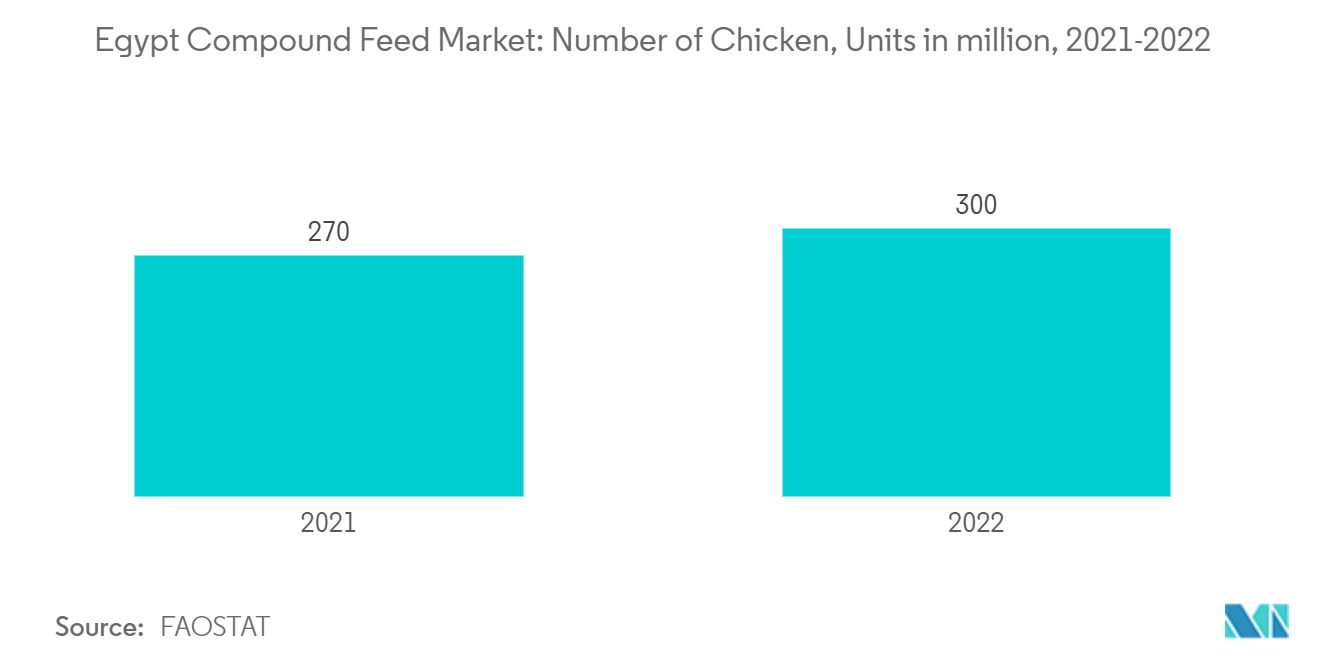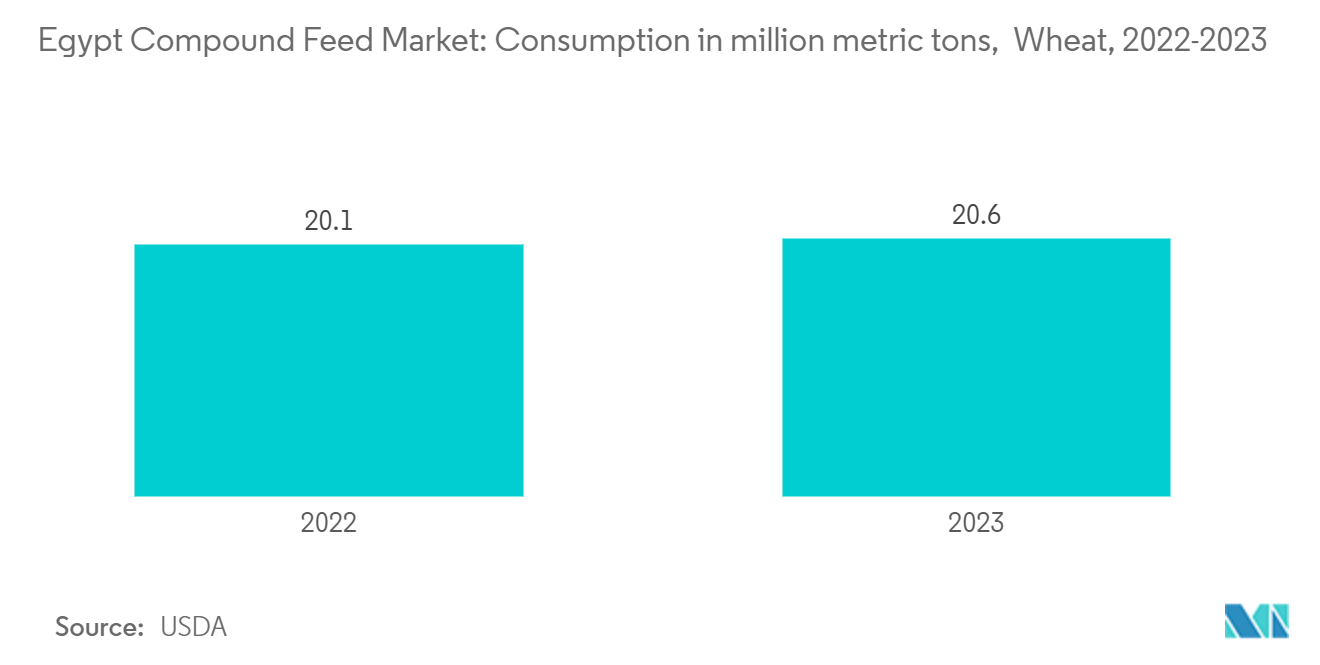Market Trends of Egypt Compound Feed Industry
Poultry Compound Feed is the Fastest-growing Segment
Poultry is one of the main agricultural industries in Egypt. It contributes 10% of agricultural value-added, with the country producing over 2.5 million metric tons of chicken meat. According to data from the FAO, the per capita consumption of poultry is approximately 15 kg per year. The sector is highly heterogeneous, comprising large, integrated, specialized producers and at least 11 million households keeping chickens and other poultry.
Stakeholders have identified two main poultry production systems in Egypt: intensive/commercial and extensive/household. The intensive poultry production system in Egypt creates a diverse and substantial demand for compound feed. These systems, comprising small-scale producers, medium-scale farms, and integrated producers, account for approximately 84% of total poultry meat production, requiring a substantial volume of feed to maintain efficiency and productivity across four to eight production cycles annually, according to FAO.
The geographical concentration of intensive poultry farms, primarily in southern Egypt, facilitates efficient distribution and logistics for the compound feed industry. Moreover, the integration of modern husbandry practices and biosecurity measures within the intensive poultry sector elevates the standards and requirements for compound feed. Producers aim to use high-quality feed that supports disease control programs for conditions like salmonellosis and avian influenza.
Furthermore, larger integrated farms with the financial capacity to adopt advanced technologies drive demand for premium feed products, encouraging feed manufacturers to improve their offerings continuously. Therefore, Egypt's dynamic and substantial poultry industry, characterized by an intensive production system and continuous demand cycles, plays a pivotal role in driving the growth and development of the compound feed market.

Cereals are the Most Used Ingredients in Type Segment
The cereal-based compound feed market in Egypt plays a crucial role in supporting the country's substantial animal nutrition industry. Cereal ingredients, primarily corn and wheat, are essential for providing energy-rich diets necessary for animal growth and productivity. Maize is the most common type of cereal ingredient used in the country's manufacturing of feed.
According to FAO, Egypt’s yellow corn production covers less than 20% of its feed demand needs, and thus, imports are supplementing the feed manufacturing industry’s expanded production. According to the ITC trade map, Egypt imported USD 2.45 million valued maize in 2023. Furthermore, FAS Cairo stated Egypt's total corn consumption in 2023 as 13.9 million metric tons, which was up by almost 3.0% from the consumption of 2022, which was 13.5 million metric tons.
Wheat also plays an important role as a feed ingredient in the country's cereal-based compound feed market. Primarily produced for human consumption, wheat in animal feed provides essential protein and energy. According to the data of FAOSTAT, the country's wheat production in 2023 was 9.7 million metric tons. The country's wheat production is not sufficient to fulfill the country's consumption demand; hence, it depends mostly on imports. In 2023, Egypt imported 9.16 million metric tons of wheat, maintaining its status as one of the world's largest wheat importers, according to ITC Trademap.
Furthermore, Egypt’s feed mills produce poultry feed mix of 70% yellow corn, 19.4% soybean meal, 3.4% wheat bran, and 1.9% broiler concentrates (fish or meat meals), along with minerals and vitamins. On the other hand, aquaculture’s major dietary energy sources include 20% to 25% yellow corn, 20% to 30% wheat bran, 10% to 25% rice bran, and 1% to 5% vegetable oils. The feed mix formulation depends on the protein and energy contents of the feed and the availability and price of the ingredients, including fish species and their sizes. Thus, cereal by-products are gaining traction across feed manufacturers, owing to their cost-effective feed options, and are anticipated to continue the same during the forecast period.


